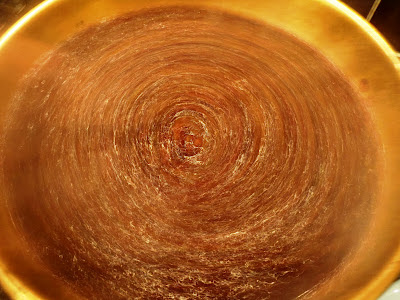It has been a long time since I visited Stonehenge; I last did it via an illegal pop festival in the boot of my friend's Ford Cortina, in the early eighties...
Back to the present day and things have changed considerably, but I didn't want to just trail the children around the stones and then go back to a hot car. I wanted to see the surrounding countryside; so I took an Ordinance Survey map.
Rambling along the route we followed allows you to understand the context of this enigmatic monument within the landscape; there are several explanatory plaques along the way. The experience of the walk will greatly augment the information you receive when you inevitably join the masses, trudging around the stones.
This is stunning, quiet (apart from the military helicopters that use the Cursus as a landmark) countryside hike of about 4 miles; my 6 year old boy managed the route, aided by a picnic roughly halfway along. You will be walking through rough fields (some containing animals) and clambering over styles, so the route may seem more like 5 miles.
Start in the hideously busy visitor centre car park (if you must) parking and toilets are free. An alternative would be to park in Amesbury near the church or set off across country from Durrington walls / Woodhenge.
Walk over the fields to view the Cursus Barrows, a few other people will manage to do this with you. We saw lots of wildlife and only a couple of other people, after we reached the Cursus. Go through a gate or over a fence and walk through the field to the Cursus, hardly anyone else will bother going this far but it is well worth the effort. The Cursus is marked by a slightly raised bank on either side, walk along the Cursus from West to East.
Walking the Cursus you will pass a waterworks and cross a rough road via styles; about 3/4 of the way along, Stonehenge becomes visible on the horizon, putting it into perspective within the environment. You will also notice the shimmering mass of the car/coach park and (what looks like) a caged hoard of lemmings slavishly trudging toward the Stones, shop and back to their oven-like vehicles. If you do only this, you will surely miss out on the best possible experience.
Just past the Eastern end of the Cursus, head South - down the path until you see the Old Kings Barrows on your right.
Go West now until the path turns South again to the New Kings Barrows.
 |
| Chasing Thistledown |
Just before the New Kings Barrows you will see a sign indicating the Avenue, which crosses the path you are currently on, East to West.
It's well worth visiting the New Kings Barrows, which are just past this point (we had to negotiate a flock of sheep occupying the path at this point, they were no trouble), then turn back and cross the field via a gate and walk along the Avenue in a Westerly-ish direction.
The Avenue is now an overgrown cow field and rarely walked but with a map and some good observation skills, you should be able to work out your route. The Avenue turns toward the Henge roughly in line with the corner of the trees by the Eastern end of the Cursus.
You will then be walking up-hill, through sheep, toward the Heel Stone and Stonehenge monument. You will now also be walking in the same direction that the sun would shine, as it rises at dawn on the Winter Solstice.
Go into the car park; there you can get yourself a well-earned cup of something or an ice cream. Finally, visit the Stones from here, along with the hordes; as you walk around the fenced off Stones; take care to look out at the various barrows, some of which you will have already experienced; they now all lie on the horizon of the various vistas, setting the iconic Stonehenge monument at the centre of this mysterious prehistoric landscape.
It is just about possible, with careful camera positioning, to make the crowds of people vanish from your photos.
 |
| Hungry Starlings by the Cafe |
Entrance to the monument is free for National Trust and English Heritage members.
 |
| The Obligatory Tourist Shot |
The good news is that whole journey will soon be made far more agreeable because the visitor centre, shop and car park are going to be relocated more than a mile away and then screened by trees. The busy road and ugly 2m high chain-link fence that separates the Stones from the Cursus and the Avenue, are then going to be returned to grass.
 |
| The Rest of the Tourists |
Why this was not done in the first place is almost as big a mystery as how and why Stonehenge was built in the first place!





























































